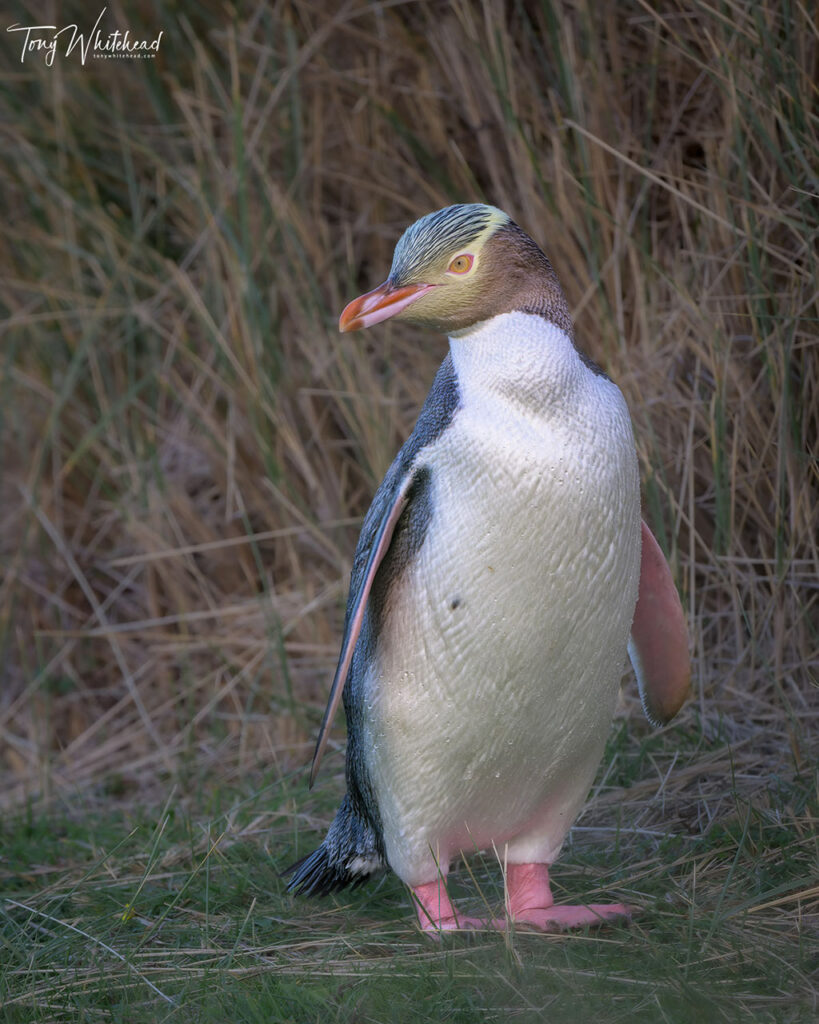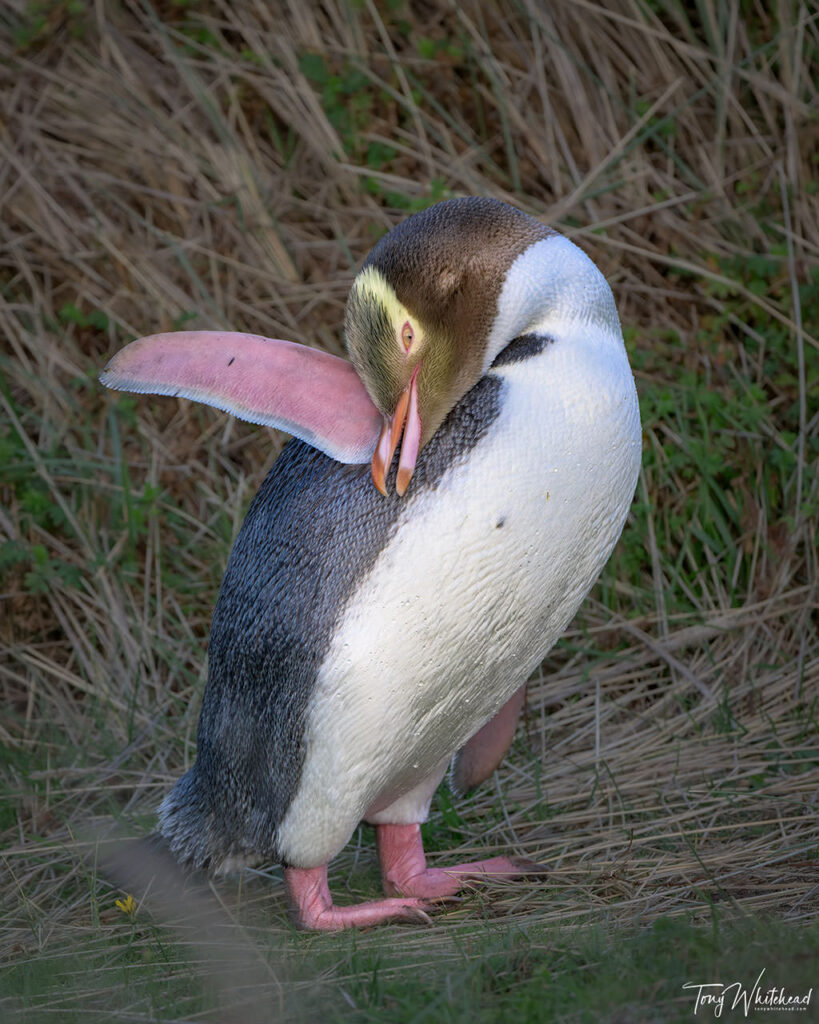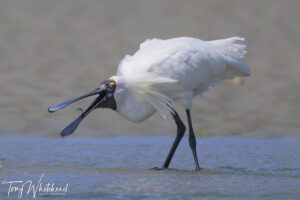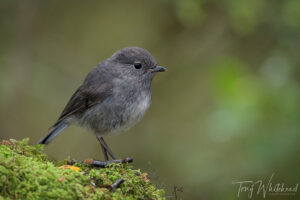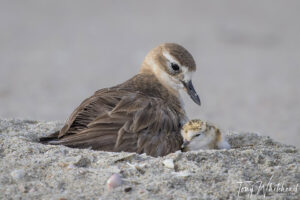Last week I shared the above image of a Hoiho/Yellow-eyed Penguin and mentioned that I had removed a flipper band in Photoshop. Flipper bands have been historically used to track individual penguins for study but have been shown to negatively impact on breeding success so have been replaced with transponders. As a long term study population, many of the birds seen at Penguin Place still have flipper bands. I’m not sure if there is any rationale for removing bands as the stress of the process may be more damaging than just leaving them in situ.
Photographically I find any bands distracting in the image. There are 2 strategies to manage this. Firstly to wait until the bands are concealed by plumage, out of focus foreground elements or pose. In this case the penguin walked up from the beach only exposing one side to us. Foreground elements can be more useful for leg bands and no opportunity presented this as an option for this flipper band.
The bird paused a few times to preen and this offered a chance for a photo when it was obstructing the band as shown below.
While an interesting behavioural image it is an awkward pose so I tried the digital surgery option for the top image. Previously this would have required quite a bit of work with the clone stamp tool but content aware fill now makes this a much quicker operation. The following images show a before and after achieved using a quickly drawn selection around the band being replaced with content aware fill. This largely solved the problem but left a small step in the line of the flipper which was easily cleaned with a couple of clone stamps.


While digital image alteration is unacceptable for reportage and many competitions, I don’t have any issue with it for pure image making purposes. Most of my images are made for my pleasure and if I can make the image more pleasing with some digital surgery I am fine with that.
Photo with Nikon Z9 and Nikkor Z 800mm f6.3 VR S
